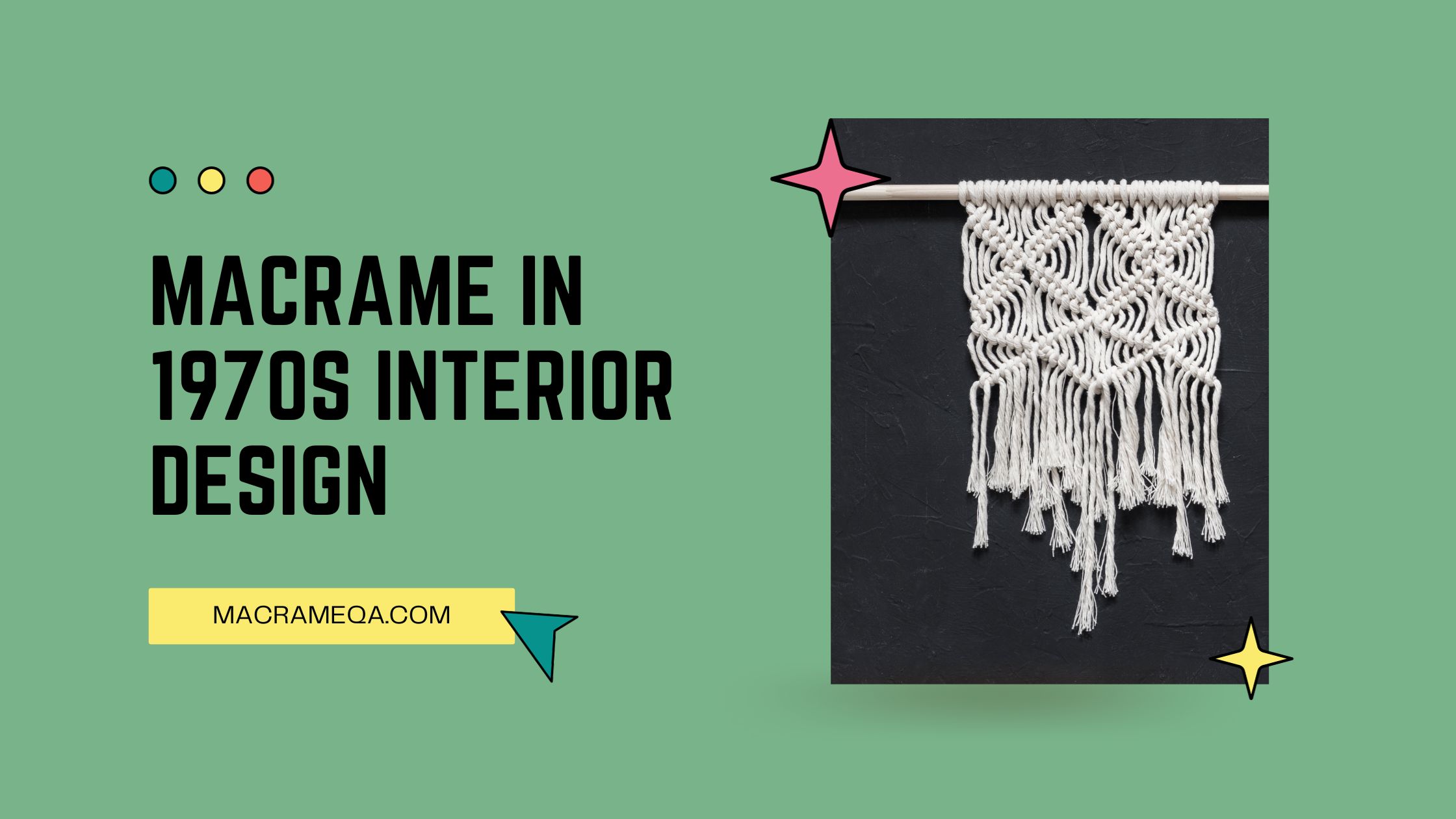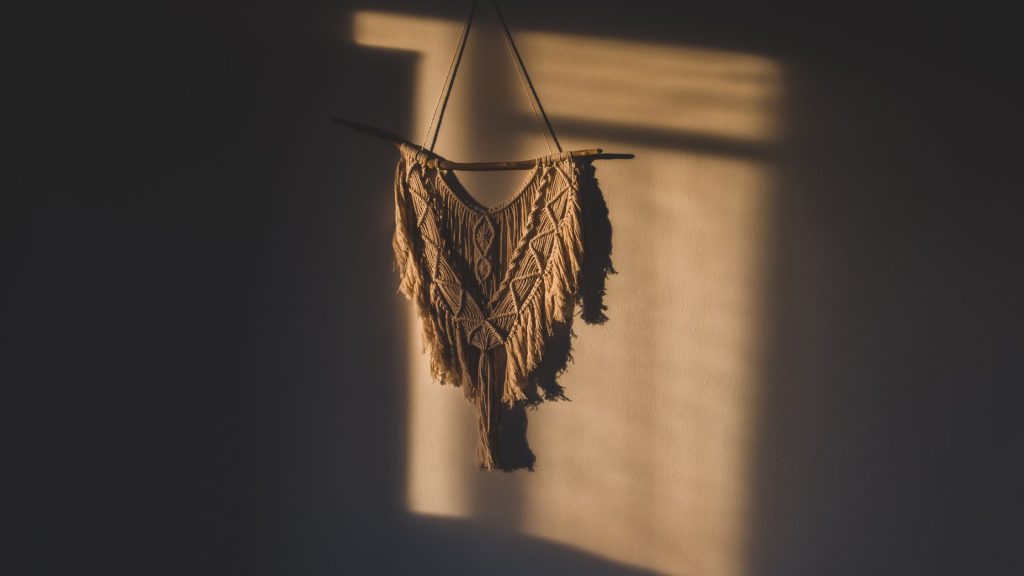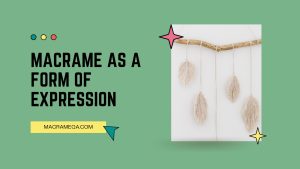In the vibrant and eclectic world of 1970s interior design, one element that stood out and captivated the imagination was macrame. This timeless craft, with its intricate knots and tactile textures, became an integral part of home decor during this era. From intricately woven wall hangings to delicate plant hangers, macrame added a touch of bohemian charm to living spaces, reflecting a desire for self-expression and a connection to nature. Join us as we explore the fascinating role of macrame in 1970s interior design and discover how it continues to inspire modern design today.
Macrame in 1970s Interior Design
The 1970s were a decade known for its unique and vibrant interior design trends, and one of the most popular trends of the time was macrame. This decorative craft form became synonymous with the era, adorning homes with its intricate knotting techniques and natural materials.
Macrame as a Popular Trend in the 1970s
Macrame truly emerged as a popular trend in the 1970s, capturing the attention of homeowners and interior designers alike. This ancient craft, which originated in the Middle East, gained widespread popularity during this decade due to its versatility and ability to add a touch of bohemian elegance to any space.
Macrame Techniques and Materials Used
Macrame involves the art of knotting cords together to create various patterns and designs. The techniques used in 1970s macrame included basic knots like the square knot and the half-hitch, as well as more complex knots such as the double half-hitch and the lark’s head knot. Natural materials were predominantly used, such as jute, hemp, and cotton ropes, giving macrame pieces their characteristic rustic appeal.
Macrame as Decorative Wall Hangings
One of the most iconic uses of macrame in 1970s interior design was as decorative wall hangings. These intricate woven pieces added texture and visual interest to bare walls, turning them into focal points of the room. Macrame wall hangings came in various sizes and designs, from small intricate patterns to large statement pieces that covered an entire wall.
Macrame Plant Hangers and Hanging Chairs
Macrame plant hangers were another popular application of this craft in 1970s interior design. These plant hangers allowed homeowners to bring nature indoors and create a cozy and green ambiance. Hanging plants in macrame holders added an element of natural beauty to any room. Additionally, macrame hanging chairs were a unique and comfortable seating option, providing a bohemian vibe to living spaces.
Macrame as Room Dividers
In the 1970s, open floor plans were becoming increasingly popular, and macrame was used to create stylish and functional room dividers. These macrame screens allowed homeowners to section off areas while maintaining a light and airy feel in their homes. Macrame room dividers featured intricate patterns and were often hung from the ceiling, creating a visual separation without fully closing off the space.
Macrame Tablecloths and Window Coverings
Macrame tablecloths and window coverings added a touch of elegance and softness to 1970s interior design. Macrame tablecloths were often used on dining tables, adding texture and interest to mealtime. Window coverings, such as macrame curtains or valances, let in filtered light while offering privacy and a bohemian flair. These macrame accents brought a cozy and inviting atmosphere to any room.
Macrame as Bedspreads and Pillow Covers
Bedrooms were not exempt from the macrame craze. Macrame bedspreads and pillow covers were popular choices for adding a touch of texture and style to beds. The intricate patterns and soft natural fibers of macrame lent a sense of comfort and relaxation to bedrooms, while also showcasing the artistic craftsmanship of the pieces.
Macrame Lampshades and Light Fixtures
Lighting played a crucial role in 1970s interior design, and macrame was incorporated into lampshades and light fixtures in creative ways. Macrame lampshades offered a soft and warm glow, filtering the light and casting beautiful patterns on the walls. Light fixtures with macrame accents, such as hanging pendants or chandeliers, added a bohemian flair to living spaces, creating a unique and cozy ambiance.
Macrame as Furniture Accents
Macrame was not limited to wall hangings and plant hangers; it was also used as accents on furniture. Macrame chair backings, ottoman covers, and even sofa throws brought a touch of handmade beauty and individuality to furniture pieces. These macrame accents were often showcased in earthy tones that complemented the natural materials of the era, creating a harmonious and inviting space.
Macrame in Bohemian and Hippie Style Decor
The 1970s were known for their bohemian and hippie-inspired decor styles, and macrame perfectly embodied this free-spirited aesthetic. Macrame pieces seamlessly blended with elements like natural wood, shag rugs, and colorful textiles, creating a warm and eclectic atmosphere. Whether it was a macrame wall hanging or a plant hanger, these pieces added a touch of handmade artistry that defined the era’s design ethos.
Conclusion
In conclusion, macrame played a significant role in 1970s interior design. It was used in various applications, ranging from wall hangings to furniture accents, bringing a touch of handmade beauty and bohemian elegance to homes. This versatile craft form not only showcased the artistic skills of the creators but also added texture, warmth, and individuality to spaces, making it a timeless trend still cherished today. So, if you want to add a touch of 1970s charm to your home, don’t shy away from incorporating macrame into your interior design.









